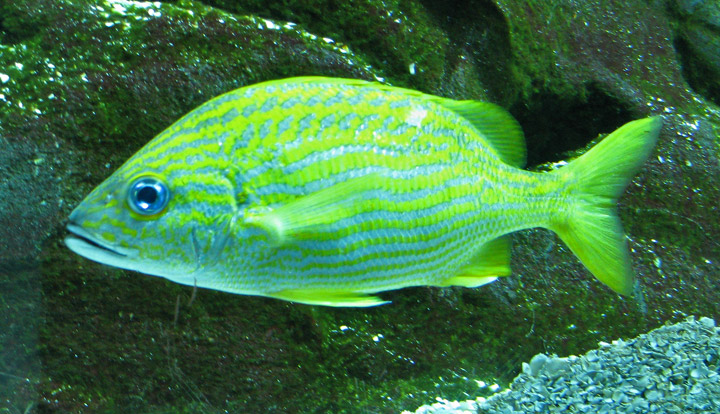Source(google.com.pk)
Aquatic Animals Pictures Biography
In the judeo-Christian tradition, prophets such as Abraham, Moses, Jesus and many others went into the mountains alone to seek union with God. They fasted, prayed and meditated for many days, weeks and even months. They endured hunger, thirst, cold, heat, exhaustion and many other stresses to seek God. In the Muslim tradition the prophet Mohammed and Sufis led ascetic lives in the wilderness to find and to commute with God. Similarly in Asia, Hindu, Taoist, Shinto, Bhuddist, and Shaman priests and monks ventured into the jungles or forested mountains to find answers to the mysteries of the universe, the meaning of life and death, the spirit world and other philosophical questions.
B. Hermits and Forest Monks
For centeries, forest monks and hermits traveled and lived in the wilderness in search for meaning.
Dangers in the Wilderness
Many died from starvation, disease, over exposure and natural disaters (such as earthqaukes, volcanoes, floods, fire, from lightning storms, etc). Some were killed by wild animals (such as tigers, leopards, wolves, wild dogs, snakes, insects, etc). Others were attacked by hostile tribes living in the jungle. Some went mad. It was extremely dangerous to live alone in the jungle, yet some survived to share their experiences.
C. The Legend of Paya Halin
The following is a story of one of the famous forest monks of ancient Burma in the 9th century AD.
Nameless Boy
One nameless boy was treated for his wounds at the Halin Monastery in north central Burma. He had lost his family, friends and home during one many regional wars. His village also was destoyed. After he recovered from his wounds hebecame a monk to deal with his emotions of grief, anger and fear, and to search for inner peace.
He wasan extremely quiet boy, but was ver diligent and hard working. He studied Dharma, showed his total devotion to the Sangha and found refuge in the Buddha.
Ordination
After many years of hard work, he finally recieved ordination around the age of 25. At this time invaders came again and attacked the region. The Halin Monastery was destroyed. The abbot and several monks were killed. Many fled into the mountains.
This young nameless monk survived by hiding in the caves with novice monks. He decided to take on the Buddhist name 'Paya Halin' in honor of the monastery, which had cared for him during his time of need. earlier in his youth, the war had destoyed his family. Now, it had destoyed his monastery which had given hime refuge. He continued to wrestle with his grief, fear and anger.
Into the Wilderness
He decided to become a hemit and wandered away from the war torn region into the jungle of Manipura (northern border of India and Burma). He had little or no knowledge of jungle craft. He learned to survive through trial and error and with the help of many friendly villagers.
He did not stay in one place long. He travelled to the thick wooded regions of southern Tibe, the forest covered mountain ranges of northeastern India and the deep jungle valleys and hills of northern Burma.
D. Transformation of a Hermit
After living in the jungle for many years, the monk Paya Halin did not look like a monk anymore.
Physical Transformation
His hair had grown long and become matted. His face had become gaunt and rugged. His robe was worn and torn by daily work and the color faded. His body was lean and wiry. His skin was dark and brown from the sun, rain and wind.
His whole physical being had been transformed. His face could still show serenity and sorrow, but his voice was thick and harsh.His body had become rugged. His posture and gait had also changed. VIllagers who did not know about his existence were threatened or frightened by his physical appearance.
Survival Tools
The attire of Paya Halin consisted of his ragged discolored robe, short dha (sword), bamboo staff,long rope, river stones, bamboo cantiene, bamboo cup, cotton bag, straw mat and bamboo slippers.
Visiting Remote Villages
During his long and arduous journey, he had visited many villages in the jungles of Tibet, India and Burma.Their followers of many belief systems in these villages including Hinduism, Brahnmanism, Tantricism, Buddhism, Mysticism, Spiritualism, Shamanism and Animism among others.
Hostile Villages
The villagers, who embraced animistic traditions, did not recieve him well. They were threatened by his strange appearance. Children ran away in terror. Women screamed in fright and called the men for help. The men picked up swords, spears and sticks to defend the village and drove him away. He had to depart in haste to avoid injuries and death.
Friendly Villages
However some villages openly welcomed him, fed him, and attended to him with kindness. They shared their knowledg of jungle crafts and survival and defensive skills. He shared with them the teachings of Buddha.
E. Basic Skill Development
The following list is a brief outline of skills he learned from the people who lived in the jungles of Burma, India and Tibet.
1. Survival Skills
Finding shelter, food and water
2. Healing Skills
Daily yoga practice to maintain health and endurance.
Herbal plants to prevent and restore from illness and cuts, and for body cleanliness and hygiene.
Structural manipulation to mend broken bones, dislocations and muscle stress.
3. Relational Skills
Taming or communicating with animals and people.
Understanding the environment and using the trees hills and streams.
Appeasing the jungle spirits (forest nats).
4. Cultivating Skills
Making tools from bamboo, vine and rocks.
Digging wells or irrigating water from streams.
Growing plants and fruits.
5. Spiritual Skills
Meditation (mantra and pranayama to achieve Samadhi)
Tantric ritual (to commune with dieties)
Nat ritual (to commune with the spirit world of nature)
 Aquatic Animals Pictures
Aquatic Animals Pictures
 Aquatic Animals Pictures
Aquatic Animals Pictures
 Aquatic Animals Pictures
Aquatic Animals Pictures
 Aquatic Animals Pictures
Aquatic Animals Pictures
 Aquatic Animals Pictures
Aquatic Animals Pictures
 Aquatic Animals Pictures
Aquatic Animals Pictures

 Aquatic Animals Pictures
Aquatic Animals Pictures
 Aquatic Animals Pictures
Aquatic Animals Pictures
 Aquatic Animals Pictures
Aquatic Animals Pictures
Aquatic Animals Pictures Biography
In the judeo-Christian tradition, prophets such as Abraham, Moses, Jesus and many others went into the mountains alone to seek union with God. They fasted, prayed and meditated for many days, weeks and even months. They endured hunger, thirst, cold, heat, exhaustion and many other stresses to seek God. In the Muslim tradition the prophet Mohammed and Sufis led ascetic lives in the wilderness to find and to commute with God. Similarly in Asia, Hindu, Taoist, Shinto, Bhuddist, and Shaman priests and monks ventured into the jungles or forested mountains to find answers to the mysteries of the universe, the meaning of life and death, the spirit world and other philosophical questions.
B. Hermits and Forest Monks
For centeries, forest monks and hermits traveled and lived in the wilderness in search for meaning.
Dangers in the Wilderness
Many died from starvation, disease, over exposure and natural disaters (such as earthqaukes, volcanoes, floods, fire, from lightning storms, etc). Some were killed by wild animals (such as tigers, leopards, wolves, wild dogs, snakes, insects, etc). Others were attacked by hostile tribes living in the jungle. Some went mad. It was extremely dangerous to live alone in the jungle, yet some survived to share their experiences.
C. The Legend of Paya Halin
The following is a story of one of the famous forest monks of ancient Burma in the 9th century AD.
Nameless Boy
One nameless boy was treated for his wounds at the Halin Monastery in north central Burma. He had lost his family, friends and home during one many regional wars. His village also was destoyed. After he recovered from his wounds hebecame a monk to deal with his emotions of grief, anger and fear, and to search for inner peace.
He wasan extremely quiet boy, but was ver diligent and hard working. He studied Dharma, showed his total devotion to the Sangha and found refuge in the Buddha.
Ordination
After many years of hard work, he finally recieved ordination around the age of 25. At this time invaders came again and attacked the region. The Halin Monastery was destroyed. The abbot and several monks were killed. Many fled into the mountains.
This young nameless monk survived by hiding in the caves with novice monks. He decided to take on the Buddhist name 'Paya Halin' in honor of the monastery, which had cared for him during his time of need. earlier in his youth, the war had destoyed his family. Now, it had destoyed his monastery which had given hime refuge. He continued to wrestle with his grief, fear and anger.
Into the Wilderness
He decided to become a hemit and wandered away from the war torn region into the jungle of Manipura (northern border of India and Burma). He had little or no knowledge of jungle craft. He learned to survive through trial and error and with the help of many friendly villagers.
He did not stay in one place long. He travelled to the thick wooded regions of southern Tibe, the forest covered mountain ranges of northeastern India and the deep jungle valleys and hills of northern Burma.
D. Transformation of a Hermit
After living in the jungle for many years, the monk Paya Halin did not look like a monk anymore.
Physical Transformation
His hair had grown long and become matted. His face had become gaunt and rugged. His robe was worn and torn by daily work and the color faded. His body was lean and wiry. His skin was dark and brown from the sun, rain and wind.
His whole physical being had been transformed. His face could still show serenity and sorrow, but his voice was thick and harsh.His body had become rugged. His posture and gait had also changed. VIllagers who did not know about his existence were threatened or frightened by his physical appearance.
Survival Tools
The attire of Paya Halin consisted of his ragged discolored robe, short dha (sword), bamboo staff,long rope, river stones, bamboo cantiene, bamboo cup, cotton bag, straw mat and bamboo slippers.
Visiting Remote Villages
During his long and arduous journey, he had visited many villages in the jungles of Tibet, India and Burma.Their followers of many belief systems in these villages including Hinduism, Brahnmanism, Tantricism, Buddhism, Mysticism, Spiritualism, Shamanism and Animism among others.
Hostile Villages
The villagers, who embraced animistic traditions, did not recieve him well. They were threatened by his strange appearance. Children ran away in terror. Women screamed in fright and called the men for help. The men picked up swords, spears and sticks to defend the village and drove him away. He had to depart in haste to avoid injuries and death.
Friendly Villages
However some villages openly welcomed him, fed him, and attended to him with kindness. They shared their knowledg of jungle crafts and survival and defensive skills. He shared with them the teachings of Buddha.
E. Basic Skill Development
The following list is a brief outline of skills he learned from the people who lived in the jungles of Burma, India and Tibet.
1. Survival Skills
Finding shelter, food and water
2. Healing Skills
Daily yoga practice to maintain health and endurance.
Herbal plants to prevent and restore from illness and cuts, and for body cleanliness and hygiene.
Structural manipulation to mend broken bones, dislocations and muscle stress.
3. Relational Skills
Taming or communicating with animals and people.
Understanding the environment and using the trees hills and streams.
Appeasing the jungle spirits (forest nats).
4. Cultivating Skills
Making tools from bamboo, vine and rocks.
Digging wells or irrigating water from streams.
Growing plants and fruits.
5. Spiritual Skills
Meditation (mantra and pranayama to achieve Samadhi)
Tantric ritual (to commune with dieties)
Nat ritual (to commune with the spirit world of nature)
Aquatic Animals Pictures






Aquatic Animals Pictures



No comments:
Post a Comment